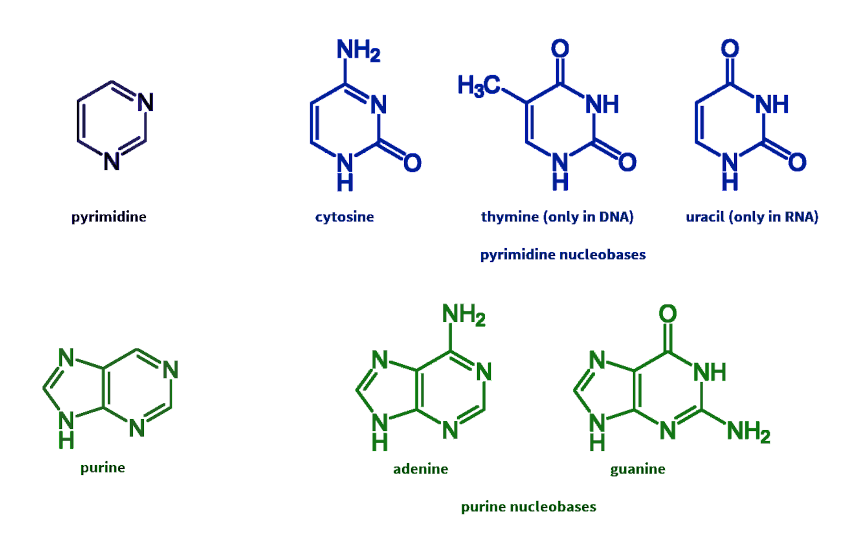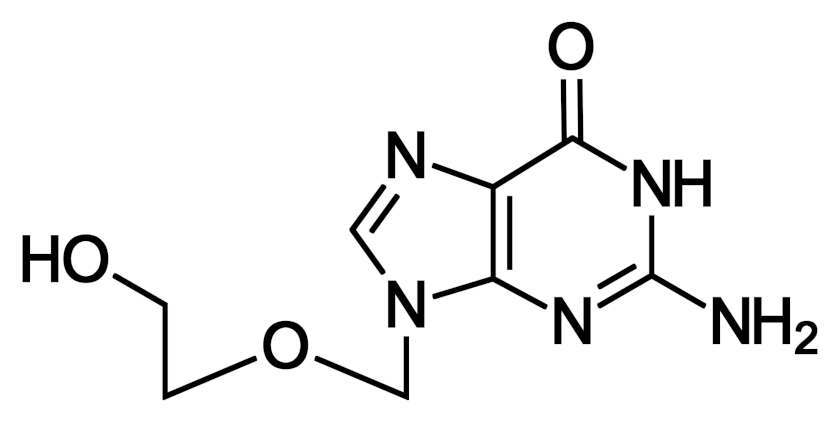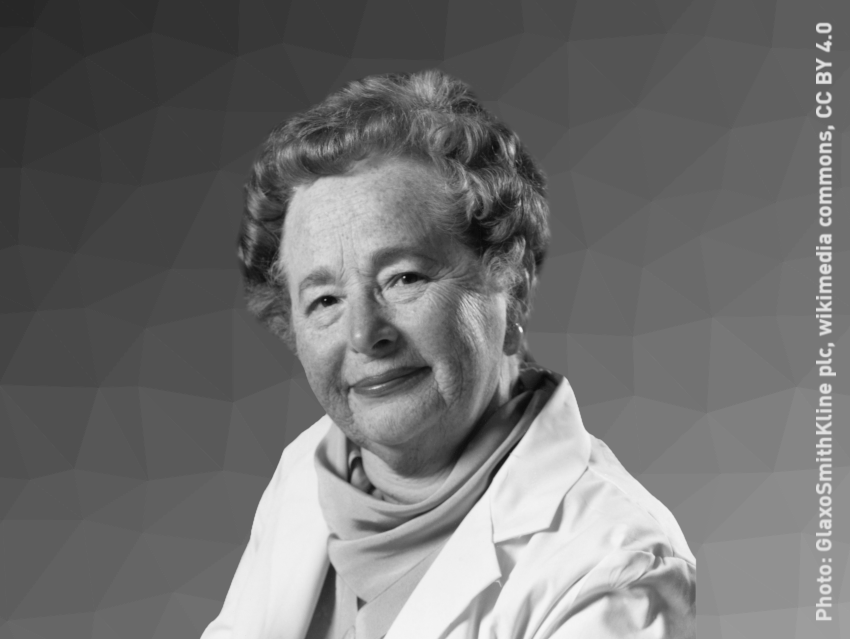Gertrude Belle Elion (1918 – 1999) was an American biochemist and pharmacologist who is well-known for her groundbreaking work in drug development [1–4]. The Nobel Prize in Physiology or Medicine 1988 was awarded to Elion, her collaborator George H. Hitchings, and Sir James W. Black “for their discoveries of important principles for drug treatment” [5].
Elion co-developed, for example, drugs for the treatment of leukemia, an important drug against gout, as well as an immunosuppressant that prevents the rejection of transplanted organs. The latter enabled the successful transplantation of kidneys to unrelated recipients [6]. Elion also co-developed the first selective antiviral medication—acyclovir, which is used to treat herpes infections. In addition, her work provided a basis for the development of the antiretroviral drug azidothymidine (AZT), which was the first drug used against HIV/AIDS.
“The World Was Not Waiting for Me”
Gertrude Belle Elion was born in New York City, NY, USA, on January 23, 1918. Her parents were Jewish immigrants from Lithuania and Poland. She loved to learn and had skipped two grades by the time she was twelve. She graduated from high school in 1933 at the age of 15. Elion’s parents had been heavily affected by the Wall Street Crash of 1929 and could not pay for her university education. However, she qualified to attend Hunter College in New York City tuition-free.
Elion had some trouble picking a major for her college education due to her broad interests and curiosity [1]. The death of her grandfather from cancer influenced her to choose natural sciences. In particular, she wanted to study chemistry, hoping to use her education to work towards a cure for the disease. She completed her Bachelor’s degree in chemistry at Hunter College in 1937.
Initially, Elion could not go on to graduate school after completing her Bachelor’s degree due to her family’s financial situation caused by the economic depression at the time. She looked for a job, but ran into difficulties: Open positions in research were rare, and the small number of available laboratory jobs were not accepting women. As she put it, “They wondered why in the world I wanted to be a chemist when no women were doing that. The world was not waiting for me” [1]. She also explained that she was sometimes told, “We have never had a woman in the laboratory; we think you would be a distracting influence” [7]. Elion started to attend secretarial school instead, and shortly afterwards switched to teaching biochemistry to nurses in a hospital. However, this position was limited to three months, and unemployment loomed again.
Persistence Finally Met Opportunities
Gertrude Elion took up an unpaid position as a laboratory assistant in chemistry. After a year and a half in this job, she was paid a small sum each week. With her savings and the help of her parents, she finally entered graduate school at New York University in 1939—as the only woman in her graduate chemistry class. After completing the necessary courses, Elion performed the research work for her Master’s degree at night and on the weekends. By day, in order to earn some money, she worked teaching chemistry, physics, and general science in New York City secondary schools, first as a trainee and then as a substitute teacher. She completed her Master’s degree in 1941.
When World War II started, there was a labor shortage, which also affected laboratory chemists. Women suddenly had a shot at being hired. However, Elion still found no research position at first: She worked as a quality control chemist for a food company for a year and a half, and then—finally—joined a research laboratory at Johnson & Johnson in New Brunswick, NJ, USA. She was able to work in organic and pharmaceutical chemistry for half a year, but then the laboratory was disbanded and her job description changed to testing the tensile strength of sutures. It was time to move on again to pursue work that was more meaningful to her.
Finally, in 1944, Elion found a rewarding, long-term research position as a biochemist at the pharmaceutical company Burroughs Wellcome, working with George H. Hitchings. She spent the next 39 years at the company and became Head of the Department of Experimental Therapy in 1967, a position that she held until her retirement in 1983. She continued to serve as a consultant at Burroughs Wellcome after her retirement. From 1971 to 1983, she also served as Adjunct Professor of Pharmacology and Experimental Medicine at Duke University, Durham, NC, USA, and from 1983 to 1999, she was a Research Professor there.
While working at Burroughs Wellcome, Elion started to work on a Ph.D., commuting to the Brooklyn Polytechnic Institute, NY, USA, at night. After several years, the institute requested that she switch to being a full-time student and, thus, either give up her job or give up the doctorate entirely. She chose her work and never completed a formal Ph.D., but later received several honorary doctorate degrees. In addition to the Nobel Prize and these honorary doctorates, Elion received the Garvan Medal from the American Chemical Society (ACS) in 1968, the Sloan-Kettering Institute Judd Award in 1983, the ACS Distinguished Chemist Award in 1985, the American Association of Cancer Research (AACR) Cain Award in 1985, the American Cancer Society Medal of Honor in 1990, and the U.S. National Medal of Science in 1991. Also in 1991, she was the first woman inducted into the U.S. National Inventors Hall of Fame. Gertrude B. Elion passed away in Chapel Hill, NC, USA, on February 21, 1999.
Finding New Drugs Using Rational Design
When Gertrude Elion joined George H. Hitchings at Burroughs Wellcome in 1944, he introduced her to his work on nucleic acids, in particular, the potential of purine and pyrimidine derivatives to treat a variety of diseases by imitating the “natural” nucleosides and interfering with DNA synthesis.
Pyrimidines are six-membered aromatic heterocycles with two nitrogen atoms (pictured below). Purines are aromatic heterocycles that consist of a pyrimidine ring and an imidazole ring (pictured below). In nucleic acids, there are three pyrimidine nucleobases (cytosine, thymine, and uracil) and two purine nucleobases (adenine and guanine). A nucleobase, a sugar, and a phosphate unit form a nucleotide, i.e., the monomer unit of nucleic acids. Nucleosides can be thought of as nucleotides without the phosphate group.

Hitching and Elion used a new approach to drug development: Instead of testing natural products for their pharmaceutical activity to find drug candidates by trial-and-error, they rationally designed drugs for specific purposes based on knowledge of the differences in biochemistry and metabolism between healthy human cells and cells involved in diseases, such as cancer cells, bacteria, and cells infected with viruses. Elion was assigned to work on purines and soon started to synthesize nucleoside derivatives—before the structure of DNA was even known.
A Long List of Successful New Drugs
Together with George Hitchings, Elion synthesized a large number of purines and investigated their pharmaceutical activities, using a screening method that relied on Lactobacillus casei. This type of bacteria, found in dairy products and the gut, was used to evaluate the effects of compounds on microbial growth. This involves exposing the bacteria to substances like synthesized purines and analyzing their responses to assess the pharmacological potential of the tested substances.
In 1948, the team found that 2,6-diaminopurine inhibited the growth of L. casei by inhibiting the incorporation of the purine nucleobase adenine into nucleic acids. Analogously, 6-thioguanine was found to inhibit the incorporation of guanine into nucleic acids.
This disruption of nucleic acid synthesis leads to the death of rapidly proliferating cells such as cancer cells. Both of the above compounds were used to treat leukemia. Another purine derivative, 6-mercaptopurine (6MP), was the first purine antagonist that was useful in the treatment of acute lymphoblastic leukemia (ALL) in children. It was approved in 1953. 6MP significantly improved the survival time of the children compared with the standard treatment available at the time. It is still used for the treatment of cancers and autoimmune diseases.
Hitchings and Elion were involved in the development of many successful drugs. For example, the team also developed the anti-malarial agent pyrimethamine, a pyrimidine derivative that has been available since 1953 and today is primarily used to treat toxoplasmosis. It is sold under the brand name Daraprim, among others, and was involved in a public controversy when Martin Shkreli’s Turing Pharmaceuticals acquired the U.S. marketing rights for the drug in 2015 and raised its price by a factor of over 50. Another pyrimidine derivative, trimethoprim, can serve as an antibiotic and is used most often in the treatment of bladder infections.
The purine analogue azathioprine was first synthesized by Hitchings and Elion in 1957 and originally used as a chemotherapy drug. Further studies indicated that it can also reduce the formation of antibodies, i.e., suppress an immune reaction. Starting in 1962, a drug regime using a combination of azathioprine and prednisone enabled the successful transplantation of kidneys to unrelated recipients. The team was also involved in the development of the purine analogue allopurinol, which decreases uric acid levels and is used to prevent gout.
The First Selective Antiviral
Starting in the late 1960s, Gertrude Elion focused her research on the development of antiviral drugs. Until then, it had been considered too difficult to develop drugs that can interfere with the replication of viral DNA without also being toxic with regard to the host cell’s DNA. Early antiviral drugs were not very selective and generally too toxic for systemic administration.
Based on reports indicating that adenine arabinoside had shown activity against DNA viruses, Elion and her team speculated that 2,6-diaminopurine arabinoside, as an analogue, could also have antiviral activity and they were right: Tests showed that the compound was active against the herpes simplex virus and against the vaccinia virus in mice.

acyclovir
Elion called this moment the beginning of the team’s “antiviral odyssey” [8]. The researchers prepared derivatives of the compound and eventually, they found that 9-(2-hydroxyethoxymethyl)guanine (acyclovir, pictured above) was a potent inhibitor of the herpes simplex virus with remarkably low toxicity. Acyclovir was first presented at a conference in 1978. It caused quite a stir because Elion and her team had finally demonstrated that antiviral drugs could be selective, and that a virus inhibitor must not necessarily be toxic to the host [10].
After Elion’s retirement, she continued to consult for her former employer. With her counsel [9], a team there went on to discover azidothymidine (AZT), the first antiretroviral drug used for the treatment of HIV/AIDS.
Gertrude B. Elion is the answer to Guess the Chemist (146).
References
[1] A. M. Ellen, Gertrude Belle Elion: 23 January 1918 – 21 February 1999, Biogr. Mems Fell. R. Soc. 2008, 54, 161–168. https://doi.org/10.1098/rsbm.2007.0051
[2] K. Larsen, Gertrude Elion: January 23, 1918 – February 21, 1999, The Shalvi/Hyman Encyclopedia of Jewish Women, jwa.org. (accessed February 6, 2024)
[3] P. Adams, Meet the Woman Who Gave the World Antiviral Drugs, National Geographic, August 31, 2020. (archived version accessed February 6, 2024)
[4] N. Kresge, R, D. Simoni, R,L. Hill, Developing the Purine Nucleoside Analogue Acyclovir: The Work of Gertrude B. Elion, J. Biol. Chem. 2008, 283, E11–E13. https://doi.org/10.1016/S0021-9258(20)59806-2
[5] The Nobel Prize in Physiology or Medicine 1988, www.nobelprize.org. (accessed February 6, 2024)
[6] T. E. Starzl, C, Barker, The Origin of Clinical Organ Transplantation Revisited, JAMA 2009, 301, 2041–2043. https://doi.org/10.1001/jama.2009.644
[7] G. B. Elion, The Quest for a Cure, Annu. Rev. Pharmacol. Toxicol. 1993, 33, 1–23. https://doi.org/10.1146/annurev.pa.33.040193.000245
[8] G. B. Elion, The Purine Path to Chemotherapy, Nobel Lecture, December 8, 1988. (archived version accessed February 6, 2024)
[9] R. Koenig, The Legacy of Great Science: The Work of Nobel Laureate Gertrude Elion Lives On, Oncologist 2006, 11, 961–965. https://doi.org/10.1634/theoncologist.11-9-961
[10] E. De Clercq, H. J. Field, Antiviral prodrugs – the development of successful prodrug strategies for antiviral chemotherapy, British J. Pharmacology 2006, 147, 1–11. https://doi.org/10.1038/sj.bjp.0706446
Also of Interest
 |
Collection: Significant Milestones in Chemistry: A Timeline of Influential Chemists, Vera Köster, ChemistryViews 2023. https://doi.org/10.1002/chemv.202300018 Starting from the early alchemists we take a journey through time to examine how each of these chemists pushed the boundaries of what is possible |



